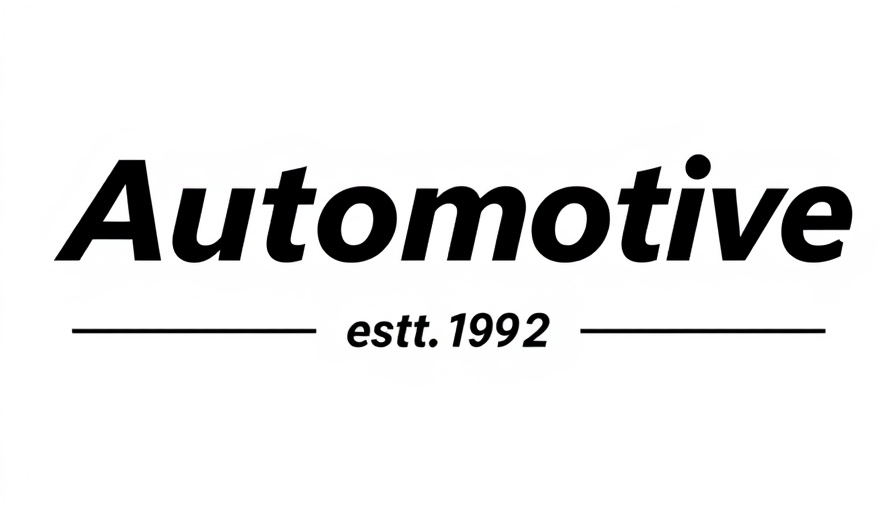
Understanding Q1 Auto Finance Trends: What They Mean for Lenders and Dealers
The first quarter of 2025 has unveiled significant shifts in the auto finance landscape, reflecting ongoing digital transformation and evolving consumer behavior. According to recent data from Cox Automotive, retail vehicle sales experienced a surge at the end of Q1, driven by consumers' preemptive purchases in anticipation of future economic fluctuations. The infusion of tax refunds into consumer wallets, coupled with a decline in vehicle supply, has created a complex environment for dealers and lenders alike.
Rising Auto Sales Activity Amid Economic Uncertainty
As we delve deeper into the auto sales fluctuations, it's clear that while activity is on the rise, the path forward remains clouded by economic uncertainty. Reports show a noticeable uptick in retail vehicle sales toward the close of Q1, largely attributed to a favorable tax refund season. However, despite these positive indicators, consumer sentiment has shown signs of decline, presenting challenges that lenders and dealers will need to navigate carefully.
The Digital Shift: eContracting Takes Center Stage
Another pivotal trend observed in Q1 2025 is the robust growth in eContracting adoption within the auto finance sector. Data reveals a staggering 104 percent increase in the adoption of digitized contracting processes over the past four years. While growth in late Q1 appears modest—only a 1 percent increase from the previous quarter—it speaks volumes about the industry's recognition of efficiency and operational enhancement potential. This upward trajectory towards streamlining workflows offers a wealth of opportunity for dealers eager to leverage technology for competitive advantage.
Navigating Challenges: Supply and Interest Rates
The auto industry won't be without its challenges as it adapts to current economic conditions. The shortage of new and used vehicles compared to 2024 has inflated prices, putting pressure on both dealers and consumers alike. As interest rates saw a dip in March and April, lenders must strategize to attract would-be buyers in an environment where pricing and availability are key concerns.
Looking Ahead: Future Implications for Stakeholders
As we assess these emerging trends and data for the auto finance sector, it's imperative for dealers and lenders to remain adaptive and proactive. Understanding consumer behavior, enhancing digital processes, and effectively managing inventory can help stakeholders not just survive but thrive amid uncertainty. Moving forward, the emphasis on digital transformation will likely intensify as financial service providers sharpen their competitive edge through innovation.
In conclusion, while the auto finance landscape of Q1 2025 brings mixed signals, the evident push towards digital workflows alongside evolving consumer dynamics provides tangible opportunities for strategic growth. Dealers who embrace these digital shifts and closely monitor market changes will be best positioned to navigate this complex marketplace successfully.
 Add Row
Add Row  Add
Add 

 Add Row
Add Row  Add Element
Add Element 




Write A Comment